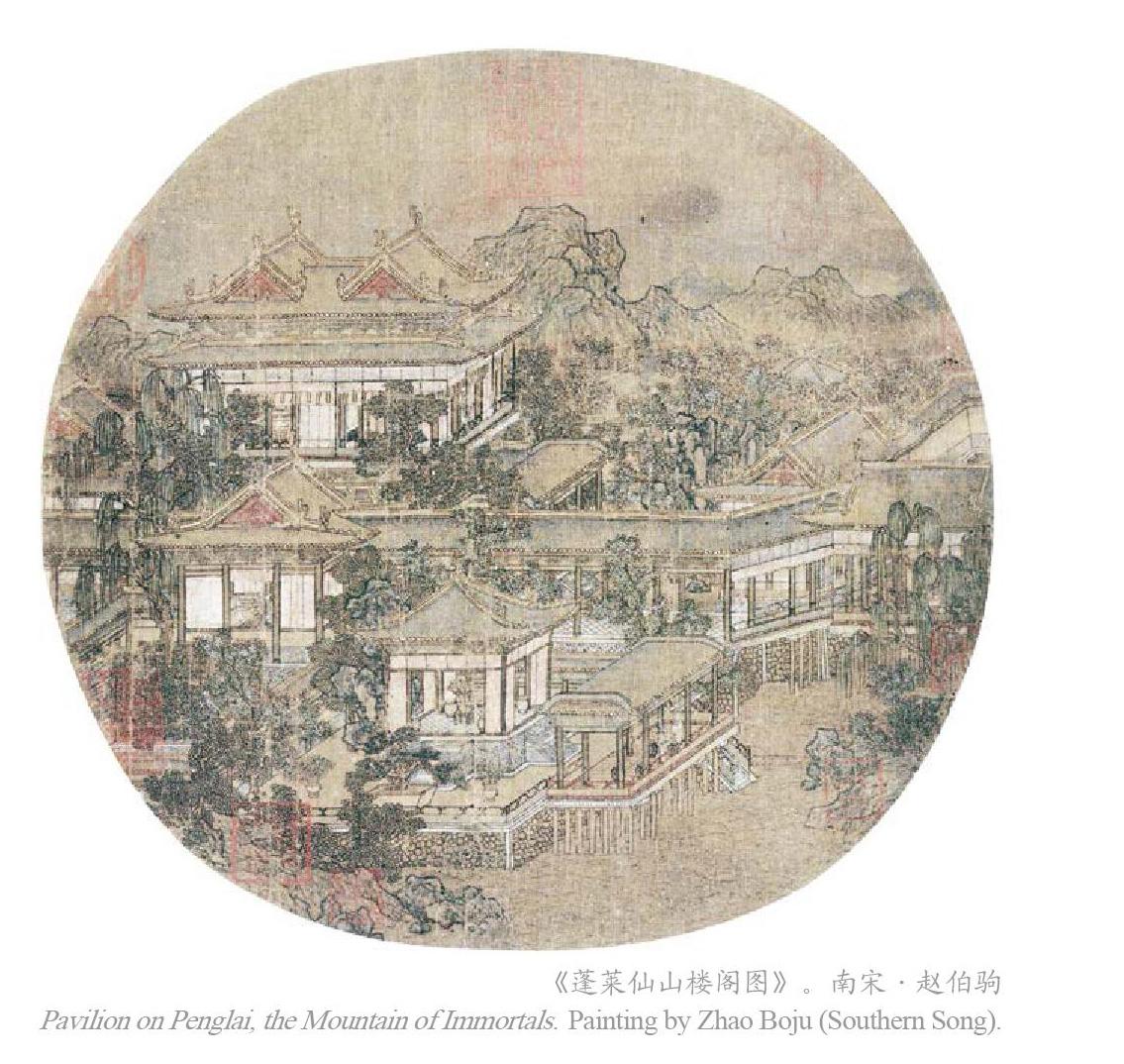宋韵:登峰造极的两宋文明(八)
2021-09-24徐吉军
徐吉军



(续上期)
十是移风易俗
风俗对封建统治具有举足轻重的作用,古人所说的“风行俗成,万世之基定”,说的便是这个意思。对此,宋代统治者深有体会,普遍认为国家的治乱兴衰与社会风俗的善恶是密切联系在一起的,如司马光说:“窃以国家之治乱本于礼,而风俗之善恶系于习。”苏轼说:“夫国家之所以存亡者,在道德之浅深,不在乎强与弱;历数之所以长短者,在风俗之厚薄,不在乎富与贫。道德诚深,风俗诚厚,虽贫且弱,不害于长而存;道德诚浅,风俗诚薄,虽强且富,不救于短而亡。”又曰:“人之寿夭在元气,国之长短在风俗。”由此,统治者在执政过程中善于通过“移风易俗”来加强对民众的教化和引导,推行其治国之策,从而实现“风行俗成,万世之基定”的统治目的。
风俗在传承的过程中,由于受社会、政治、经济以及军事等种种因素的影响,特别是社会经济的发展,使其在内容和形式上产生某些变异性的特征。而宋朝正是由于社会经济的迅速发展,从而促使传统的风俗习惯发生了一系列的变化,呈现出许多新的特征,其重要标志是随着庶民、商人阶层的兴起,士庶之礼界限被打破,产生许多新的风俗,为后世所遵循。特别是宋人的忠义气节,被民国时期的著名学者张亮采评为“万古国家社会风俗上之标准也”(张亮采《中国风俗史》第四编《宋》)。近人严复更是从政治史的角度扼要地论述了这一点,他说:“古人好读前四史,亦以其文字耳!若研究人心政俗之变,则赵宋一代历史,最宜究心。中国所以成为今日现象者,为善为恶,姑不具论,而为宋人之所造就,什八九可断言也。”
在饮食上,随着宋代经济的发展,宵禁的解除,当时的饮食已经从过去的一日两餐改为一日三餐。日常食品、饮品的种类,既有各种主食和菜肴,又有茶、酒、汤和水果等。各地对饮食口味的偏好呈现出鲜明的地域特色,大抵上是南人饭稻羹鱼,嗜咸;北人食物以麦粟和禽肉为主,嗜甜,其中中州及城市人食淡。于是,川菜、粤菜、浙菜、京馔等菜肴体系便脱颖而出。在当时,人们多以茶果待客,客至设茶,辞则点汤,乃天下通俗。与此同时,人们开始重视饮食的养生和卫生,这在京城中体现得尤为突出,如孟元老《东京梦华录》卷五《民俗》载:“凡百所卖饮食之人,装鲜净盘合器皿,车檐动使,奇巧可爱,食味和羮,不敢草略。”一些有识之士还针对社会上饮食奢侈浪费现象提出了节俭淡泊的观念,他们反对纵欲任性,崇尚素食菜羹、节制饮食,倡导自然之味,对今日的民族健康提供了思想导引,同时也成为中华民族文化博大精深的闪光点。
服饰是人们日常生活的主要内容之一。在阶级社会中,它不仅仅是为了满足人类本能的御寒暑和装饰欲望,而且是作为等级标志而出现的。中国历代社会都十分重视冠服之制,并用礼法加以约束,“贵贱有级,服位有等”(贾谊《新书》卷一《服疑》)。因此,服饰的变动一般都不大。这正如《阅世编》的作者在书中所说:“一代之兴,必有一代冠服之制,其时尚随时变更,要不过与世迁流,一新一时耳目,其大端大体终莫敢易也。”在宋代,服饰成为人们体现自身意趣、财富和身份地位及价值观念最直接、最普遍的自我表现。南宋周辉《清波杂志》卷八《垂肩冠》就说,他小时候见妇女装束,数年即一变。如他过去常见的高冠长梳,名“大梳裹”,非盛礼不用。但几十后则非常罕见,被人们称为新奇之物。这种日新月异的服饰风尚,以致突破贵贱等级的阶级堤防,波及宋代社会的各个阶层。
在住居方面,宋代与唐代相比发生了较大的变化,官僚士大夫中普遍流行建造园林式的住宅,其建筑经历了从高大宏伟到小巧精致的发展过程。富贵人家除在宅第建造别具匠心的假山外,还喜欢种植各种各样的奇花异卉。在建房过程中,还形成了一整套人们共同遵循的风俗事项,这具体表现在选址中的定向、备梁时的断木墩和开木墩、卸屋时的祭祖、破土时的祭土、砌墙时的石敢当、竖柱与上梁时的抛梁、园屋后的宴请、做脊时的植葱、盘灶后的起火、入宅时的次序、装龙板时的收予告、诸亲好友的馈赠和村民们的互助等。宋代重文,故此士大夫之家往往建有读书用的书室(或称书屋、书阁)。宋代道教和佛教趋于民间化,故人们往往在家中设有道室或佛堂、神佛堂。宋代统治者以孝治国,理学家也极力宣扬孝道,故家庙在士大夫家中也颇为常见。建筑物的匾榜风俗有所变化。如北宋时立匾榜,必系以亭、堂、斋、阁之名;但至南宋,书匾则略去了这些字样。需要说明的是,自宋代椅子的出现与在日常生活中的广泛运用,开始流行坐姿更为舒适、方便的坐榻,变为垂足而坐,从而改变了我国自商周以来延续了数千年的席地而坐、以伸足为箕居的跪坐方式。高镜台等新式的高足家具不仅盛行于民间,而且还形成了完整的系列组合,日益排挤着传统的供席地起居的家具组合,迫使它们退出历史舞台,从而为中国古代家具步入成熟期奠定了基础,最后迎来了中国古代家具的黄金时代,形成在艺术造型、工艺技巧和实用功能都日臻完善的明式家具。
在交通风俗上,宋代同样发生了变化。以陆上交通工具之一的轿子为例,便经历了一个大的发展过程。轿子起初仅限于皇家使用,是一种尊贵的象征。程大昌《演繁露》谓:“祖宗时,臣僚虽在外,亦不许乘轿。”京城百官自宰臣至百执事,皆乘马出入。后来皇帝为了照顾年老有疾的元老大臣,特许他们乘轿,以示特恩优礼。为此,文武大臣们将乘轿视为一种莫大的殊荣,如蒙皇上允准,则往往显得受宠若惊、诚惶诚恐。到北宋末年,随着社会风气的变化,乘轿之风迅速在都城开封盛行起来。政和七年(1117),有臣僚向徽宗上言:“谓法禁民庶之家不得乘轿。今京城内暖轿,非命官至富民、娼優、下贱,遂以为常。僭礼犯分,禁亦不可以缓。”以至京城中还出现了“赁轿之家”,也就是公开从事轿子的出租业务。南宋定都临安以后,乘轿之风更盛,以至出现了“无人不乘轿也”的现象。
婚姻礼俗,唐代基本遵行古代婚姻六礼:纳采、问名、纳吉、纳征、请期、亲迎。而至宋代,六礼多废,简化为纳采、纳币、亲迎三礼。古代婚礼不道贺、不作乐。宋代女子出嫁以花饰衣冠,坐花轿,以声乐迎导,以及新婚夫妇拜天地、当日庙见、吃交杯酒等礼节习俗,都对古代婚姻礼制进行了革命性的改变,在社会上广泛流行,形成新的礼仪习俗,为最高统治者及道学家们所认可,为后世所遵循沿用。针对当时婚姻论财、“榜下捉婿”、早婚和褥节陋俗的现象,一些政治家著书立说,更新婚姻观念,极力提倡文明婚姻,力图进行改革。
丧葬在中国所具有的重要作用之一,就是它的社会教化与文化积淀。统治者企图通过限制丧葬仪物的等级分配来制约风尚,区分循礼与非礼,并时刻保护特权阶层的利益不受异己力量的侵犯,在政治生活中形成金字塔般的等级序列,专制君主高居其上,芸芸众官拜伏在身着龙冠龙袍的君子脚下,聆听帝王的训谕,皇权可借此进一步神圣化。同时,丧葬中这种等级规定,也可促使生活于社会最底层的劳苦大众形成“贵贱不相逾”的社会生活方式,一切按本份行事,以达到潜移默化、巩固统治的目的。宋太祖赵匡胤说:“王者设棺椁之品,建封树之制,所以厚人伦而一风化。”(王偁《东都事略》卷2)其本意正在于此。然而随着时代的发展,殡葬风俗到宋代逐渐发生了变化。庄绰《鸡肋编》便曰:“礼文亡阙,无若近时,而婚丧尤为乖丧。又信时日,卜葬尝远,且惜殡葬之费,多停柩其家,亦不设涂甓,至顿置百物于棺上,如几案焉。过卒哭则不祭,唯旦望节序,薄具酒荈祭之,亦不哭,是可怪也。”在这一时期,人们十分重视吊丧礼仪。亲友凡有丧事,一般皆亲临吊唁;即使因故或在异地不能前往,也必派人驰书持礼往吊。士大夫吊丧时,通常还有挽联。一般认为,挽联亦始于宋代。宋代祭奠时还出现纸钱、纸彩绢衣、纸制金银元宝等纸札化的冥器,其中焚化用纸钱又称冥币、冥财或楮钱,此俗流传至今犹然。陆游《放翁家训》主张丧事从简,纸札明器“香亭魂亭、寓人寓马之类,当一切屏去”。以节约土地、保护环境的火葬,在宋代非常盛行,成为一种社会习俗。江少虞《宋朝事实类苑》载:“河东人众地狭,民家有丧事,虽至亲,悉燔爇,取骨烬寄僧舍中。以至积久,弃捐乃已,习以为俗。”此后,该风气愈演愈烈,使宋代成为中国历史上火葬最为盛行的时期。据美国学者埃布莉研究,宋代的火葬率在10%-30%之间。
宋代的节庆民俗活动多采多姿,特色鲜明,春节、元宵、寒食、清明、社日、端午、七夕、中秋、重阳、除夕等岁时佳节与各种名目的宗教、政治节日,构成了绚丽多姿的风俗长廊和人文景观。特别是经济的繁荣,使当时的节日与商业活动密切结合,刺激民众消费,以消费拉动生产。这种“假日经济”,促使民俗的内容更加新颖丰富、更加隆重繁盛,关扑、元宵观灯赏戏、清明踏青、龙舟争标、放风筝、荡秋千、蹴鞠、打球、斗鸡、驰马、拔河、相扑、赏月、观潮弄潮、水戏、登高爬山、踏歌观舞,以及郊游野餐、赏花宴饮等充满娱乐色彩的节日活动,让民众寄情于自然的适意和消遣,纵情欢娱,过得快乐,感受到人生的情趣,从而逐步形成了一些全国性的民俗,影响及于后世。
在经济和生态风俗中,宋代也形成了一些值得后世传承的良风美俗。如人们非常重视林业生产和保护,注重植树造林,将种树作为一种保持水土、美化环境的投资活动,还 严 禁 盲 目 砍伐。对耕牛非常重视,视为农家之宝。为了防止羊生病,形成了不早牧的风俗。为保护自然生态环境的基本平衡,重视保护动植物、合理利用自然资源以及保护水土等。
两宋堪称“举世重交游”的时代,米芾《方回帖》中所说的“终日对客,无可暇适”,是当时社会风俗的真实反映。其时社会各阶层的人际社会交往十分活跃,交往非常广泛,亲友、同学、同年、师生、僚友、世交、同乡、方外等均有其各具特色的社交圈子,其中最为活跃的当为士之交游。以各种社会关系而形成不同形式的交游,有其独特的交际礼仪和习俗。宋代的见面礼仪大体上可分为两类:一类是官场上的仪制,其特点是繁文缛节和等级观念;另一类是士庶交往的民间礼仪,也有不少具体的规则或约定俗成。据文献记载,宋人见客一般均穿常服,但须衣冠端正。待客座次,传统的《曲礼》主张“主人就东阶,客就西阶”。宋人在传统的基础上有所革新。沈括说:“古人尚右,主人居左。坐客在右者,尊宾也。今人或以主人之位让客,此甚无义。”司马光主张与宾友相接,当正襟危坐。南宋朱熹主张不以官品而以年齿排座次。随着生活习惯的改变、椅子等的广泛使用,宋人待客方式也从席地的“盘足坐”而发展到“垂足坐”。拜礼是宋代最为广泛的相见礼仪之一,但已远不如古,朱弁说:“客有初相见者,必设拜褥(垫),虽多不讲拜,而遗风尚存。”古人习以为常的“跪拜”,至宋代演变为以只屈一膝的“雅拜”为主。万福是宋代民间最为流行的相见时问安礼。男子相揖、妇女万福,为天下通行之礼。
由于宋代统治者实行重文的国策,故社会上勤学好文之俗非常盛行。在福建地区,百姓们均以“家贫子读书”为圭臬,“非独士为然,农、工、商各教子读书,虽牧儿饴盍妇亦能口诵古人语言”。两浙地区的好学之风更胜于福建。袁桷说:“温与闽地,犬牙相入,俗秀而矜絜,子弟胜衣能文词,父兄相与言,命束装负书,以行四方,劘切感动,约不有所就不复见。”庆元府(明州)“富家大族,皆训子弟以诗书,故其俗以儒素相先,不务骄奢。士之贫者,虽无担石,而衣冠楚楚,亦不至于垢弊”。绍兴“自宋以来,益知向学尊师择友。南渡以后,弦诵之声,比屋相闻”。苏州“虽濒海裔夷之邦,执耒垂髫之子,孰不抱籍缀辞以干荣禄,褒然而赴诏者,不知其几万数”;“父笃其子,兄勉其弟。有不被儒服而行,莫不耻焉”。江西文风之盛不逊于两浙,如饶州风俗“为父兄者以其子与弟不文为咎,为母妻者以其子与夫不学为辱”。即使是过去被人们视为蛮夷落后的岭南地区,同样弥漫着好学的风气。《舆地纪胜》卷九三载广东南雄曰:“其俗一而不杂,其风淳而不漓,其人所训习多诗书礼乐之业……本朝以来,操翰墨以取青紫者比比相属。”
有鉴于风俗的重要作用,统治者纷纷谋划治理之策,移风易俗,冀望形成他们所认为的“美俗”或“良俗”。从当时的文献记载来看,他们谋划的治理良策大致有以下几点:
一是自皇帝及宫廷做起。大中祥符元年(1008)二月,真宗对大臣王钦若说:“古今风俗,悉从上之所好。”(《续资治通鉴长编》卷六八)大臣们也认为,皇帝及后宫的表率作用显得至关重要,其习俗好坏直接对官僚士大夫和民间的生活产生积极或消极影响。如北宋名臣宋祁说:“上有所好,下必有甚者。”(《景文集》卷二五《本风俗篇》)司马光说:“夫朝廷者,四方之表仪也。朝廷之政如是,则四方必有甚者矣。”又曰:“宫掖者,風俗之源也;贵近者,众庶之法也。故宫掖之所尚,则外必为之;贵近之所好,则下必效之。自然之势也。”他要求皇帝“去奢从俭”,“专用朴素,以率天下,矫正风俗”(《司马光奏议》卷七《谨习疏》、卷八《论财利疏》)。他们希望皇帝“省声色之娱,杜奢淫之好,绝畋游之乐,节台榭之观”(《续资治通鉴长编》卷一四三)。从文献记载来看,一些开明的帝王确实是注重以身作则的。如宋太祖十分注意表率模范作用,不事侈靡,而崇尚纯朴,以冀创造一个良好的社会风尚。史载宋太祖服用俭素,退朝时常穿普通的绸服、麻鞋,所居的寝殿门悬青布帘缦。其乘舆服用,也皆尚素质。他为了养成全社会好学的风气,不仅自己“常以经籍自娱”,而且还劝文武百官多读书。相传有一天他对大臣们说:“朕即位以来,十三年矣。朕持俭素,外绝游观之乐,内却声色之娱,真实之言,固无虚饰。”(以上参见《宋朝事实类苑》卷二《祖宗圣训》)
二是从首都做起。宋人认为首都为帝王及文武大臣所居之地,其对全国各地的风俗产生了由中心向外扩散的辐射力,因此在风俗方面具有表率全国的作用,“风俗典礼,四方仰之为师”(《都城紀胜》)。如陈舜俞指出:“今夫诸夏必取法于京师。所谓京师则何如?百奇之渊,众伪之府,异服奇器,朝新于宫廷,暮仿于市井,不几月而满天下。”(陈舜俞《都官集》卷二《敦化五》)王安石等人也持同样的观点,王安石说:“且以圣人之化,自近及远,由内及外。是以京师者,风俗之枢机也,四方之所面内而依仿也……至于发一端、作一事,衣冠车马之奇,器物服玩之具,旦更奇制,夕染诸夏。”(《王文公文集》卷三二《风俗》)
三是“斥奢汰,革风俗”,并以儒家礼制及法律制度等加以约束(《续资治通鉴长编》卷一四二)。在中国,历代统治者长期奉行“教训正俗,非礼不备”(《礼记·曲礼上》)的信条,认为君臣士庶应“衣别有制,宫室有度,人徒有数,丧祭械用,皆有等宜”(《荀子》卷五《王制篇》)。这就是说,社会各阶层的成员,从生到死,从衣食住行到政治、经济、文化、交际等生活上都必须受到身份品级的限定。“贵贱有等,长幼有差,贫富轻重皆有称者也。”(《荀子》卷六《富国篇》)尊卑贵贱彼此不得逾越。礼制正是通过对消费品的限定和等级分配来制约社会风尚的变迁,区别循礼和非礼。违者为逾制或僭越,要受到法律的严厉制裁。统治者希望通过这种无处不在的现实等级形成“贵贱不相逾”的生活方式,使千家万户相沿成习,一切按本分行事,以达到潜移默化、巩固封建统治的目的。宋朝统治者曾几次下禁奢诏,官员也多次上书禁奢侈之风。
四是注重学校教育,实现化民成俗。因为他们深知“化民为俗,莫先于学”(袁燮《絜斋集》卷六《祖宗家法》)。通过从小到大的儒家品行教育,提高民众的文化素养,“以忠孝正风俗”“一道德以同风俗”,营造良风美俗的社会风气。
五是扬善抑恶,移风易俗。即对统治者认为是好的风俗加以提倡、弘扬,而对他们认为是恶的风俗加以禁止。如对历代圣帝明王及忠臣烈士,统治者便为他们建立祠庙或祠堂,希望他们能对后人起着劝戒和榜样的作用,使“民益知夫大贤之忠于国者,虽死于不幸,后世必载祠典,严庙貌,奉事尊仰之。如此皆思勉而为善。自一邑而推一郡,由一郡而推诸四方,则其为劝也岂小补哉!”(《韩魏公集》卷一《新修晋太尉嵇公庙记》)而对那些危害社会的邪神淫祠则加以取缔。其他,如提倡医药、反对巫术等也都属于此类。
(作者系浙江省社科院历史所原所长)
Cultural Splendor of the Song Dynasty (VIII)
By Xu Jijun
Social customs and mores have played an important role in Chinas feudal system. This is what the ancients meant when they said, “customs and mores are the foundation of a society throughout ages.” The rulers of the Song dynasty (960-1279) were well aware of their importance, and generally believed that the rise and fall of a country were closely linked with social customs and mores, as the Song historian Sima Guang (1019-1086) once argued, “The crux of the governance of a country is in li (rituals), while the good and evil of social customs and mores are tied to traditional practices.” Su Shi (1037-1101), the renowned Song poet and statesman also contended, “The reason why a country prospers or collapses lies in its morality or lack thereof, not in its power or lack thereof; The reason why a dynasty lasts or not lies in the strengths of its customs or lack thereof, not in its wealth or lack thereof.” It is no coincidence that rulers historically spent a lot of effort on guiding and educating the public through influencing and changing customs, so as to stay in power for generations upon generations.
While largely stable in a certain period of time, social customs and mores, in the process of being passed down, tend to mutate with the input of new social, political, economic and military factors, especially during the time of rapid economic transformation as in the Song dynasty, when a series of changes took place, symbolized by the elevated status of the common people and the merchant class, and the breakdown of barriers between the gentry and the commoners.
With the lift of curfew, eating and dining habits were among the first changes. Taking three meals a day was the new norm, replacing the old one of taking two a day. The variety of food and drinks was more enriched, including staples and various dishes, as well as tea, wine, soup and fruit. Food flavors also took on a more distinct regional characteristic: the southerners, with rice as their staple food, preferred a saltier taste, while the northerners, with wheat and poultry meat as staples, preferred a sweeter taste; in the central region and in urban areas, people preferred a lighter taste. In terms of greeting the guests, there appeared to be no regional variation: everywhere, guests were welcomed with tea and fruit. Meanwhile, the Song people began to care more about food hygiene and food waste, and the ideas have since taken root for later generations to live a healthier life.
As an indispensable item, clothing has been a perennial concern in peoples daily life. In a class society, clothes were not only to meet the basic needs, but to decorate and, more significantly, act as a symbol of hierarchy. It is no wonder that throughout Chinese history, great importance had been attached to dressing, which was even codified in rituals and laws. Therefore, clothing styles generally remained stable over time. However, in the Song dynasty, clothing fashions shifted every few years and pecking orders reflected through attires quickly broke down, as the Song people increasingly expressed their own interests, wealth, status and values through all kinds of fast-changing wear.
The Song period witnessed transformations in housing as well, which drastically differed from the Tang dynasty (618-907). Scholar-officials lived in the now popular garden residences, and whose architectural style went from being grand and majestic to being delicate and exquisite. Wealthy families were fond of not only building rockeries, but planting a variety of exotic flowers. In the process of building houses, a whole set of customs were established, for example the choice of a houses location and orientation, offering sacrifices to ancestors and the God of Land when breaking ground, hosting banquets when the house was built, and so on. Besides, the houses of scholar-officials usually had a separate study room for reading and learning, and Taoist, Buddhist and ancestral shrines were also a regular feature. Most notable of all, perhaps, was the popularization of chairs. Until the time, Chinese people had generally sat on mats or low platforms with low tables, but then gradually moved to using high tables with chairs, laying a solid foundation for the development of classical Chinese furniture.
The transportation habits of the Song people also saw quite a few changes. Take sedan chairs, one of the means of land transport, as an example. An exclusive privilege reserved for the royal family at first, the right to ride sedan chairs was later granted to ailment-afflicted senior and elderly officials as a special favor, who were only allowed to ride horses before. At the end of the Northern Song (960-1127), sedan chairs had become so popular that not only officials and rich people, but commoners and even prostitutes took to them. Indeed, sedan-chair-renting services appeared in the capital. In the Southern Song (1127-1279), riding sedan chairs was even more prevalent, that it was said “nobody goes out without a sedan chair”.
When it came to wedding customs, one significant reform in the Song was that the six rites which had been traditionally followed were streamlined into three, namely formal proposal, sending of betrothal gifts between the grooms and the brides families, and wedding ceremony. In fact, there had been no celebration and no merrymaking in weddings until the Song, when the folkways took a new turn: on the wedding day, the brides would wear decorated dress and ride in an ornamental litter, guided by upbeat music; ceremonies such as the “three kowtows” (i.e. kowtowing to heaven and earth, kowtowing to the parents and kowtowing to each other) and drinking cross-cupped wine had all been adopted by later generations.
Similar to weddings, funerals have been endowed with as much, if not more, cultural and social significance. During the Song, a good number of funeral rites needed to be observed. When people were usually expected to attend in person the funerals of their kith and kin; even if for some reason they could not make it, they should send a letter and gifts as a tribute. When scholar-officials paid their tribute, they often brought with them the elegiac couplets, which are now generally believed to have originated from this period. Another invention of the time was burning paper articles for dead people, including joss paper, paper clothes and paper gold and silver ingots. Joss paper, more commonly known as “hell money”, is still widely burnt today to commemorate deceased family members, relatives and friends.
Moreover, a range of traditional festivals were marked in the Song, including the Spring Festival, the Lantern Festival, the Qingming Festival, the Dragon Boat Festival, the Mid-Autumn Festival, among others, as well as a host of unique religious and political festivals, which, apart from their cultural importance, were also celebrated for leisure, and helped stimulate economic development and spur domestic consumption, as they were closely tied to commercial activities. Lesser known was the Song peoples concern for the environment. They advocated for the protection of forests, pastures and animals, strictly forbade rampant logging and called for the rational use of natural resources.
In light of the important role of those social customs and mores, the Song rulers and officials had tried a few approaches to popularize “good” ones and curb “bad” ones. One way was by leading by example: the emperor, the imperial court and the capital city would lead the way in observing the customs that were deemed desirable, and shrines and temples would be built for the paragons of virtue and those who followed harmful practices, such as witchcraft, would be punished. Another was by codifying these customs through Confucian rituals, imperial edicts and official laws. Finally, through the school education system, good social values were inculcated into the general public.
